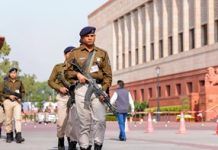The National Crime Records Bureau (NCRB) has released a revised tender for a nationwide automated facial-recognition system. The revised document states that, “this project does not involve installation of CCTV cameras nor will it connect to any existing CCTV camera anywhere”.
This is a major change from the previous version of the request for proposal (RFP), which heavily emphasised on extracting data from CCTV cameras. A functional requirement in the earlier RFP — “capture face images from CCTV feed and generate alerts if a blacklist match is found”, — has made way for the less specific requirement of “interfacing ability to analyse data on images/visuals on crime and criminals from various sources”.
The last date for submission of bids in accordance with the fresh RFP is August 6, 2020. That makes it the ninth revision in dates since the earlier RFP came out mid-last year.
Currently there is no legal framework in place for the implementation and enforcement of such technologies and the revised document does not indicate if there is any discussion on the anvil about the legality of such systems.
While the new RFP document states the use of images and videos in physical and digital form to carry out searches, the mention of curating a database through images from newspapers, raids, etc. has been scrapped.
The speed and accuracy parameter of the facial-recognition system has been revised to include fewer test cases in comparison with the previous version. For a speed test on non-ingested video to still image, the previous version had 50 test cases for videos of 300mb and 10-60 seconds each to be tested against the speed of 10 seconds, but according to the revised version, the speed test will now be conducted on only 10 test cases of 10-300 seconds each at the rate of 10 seconds for a 1 million NIST-format database. Similarly, the speed test case has been reduced to 10 test cases from 50 (still image to non-ingested video) and 30 (video to video) test cases against 180 seconds.
The revised version has also eased the pre-qualification criteria to some extent. It states that the bidder must be registered under the Companies Act 1956 or 2013 and have an annual turnover of INR50 crore in each of the last three financial years, unlike INR100 crore previously. However, startups recognised by the Department for Promotion of Industry and Internal Trade have been exempted from this clause.
Any international player or a partner of a joint-venture company willing to participate in the bidding process must provide proof of address regarding its presence in India. The bidder should have appeared in the NIST Facial Recognition Vendor Test evaluation programme conducted by NIST 2016 or later, with at least three automated facial-recognition system installations in law enforcement or government agencies worldwide in the last 10 years.








